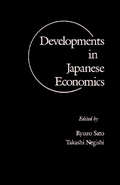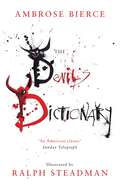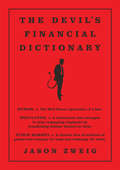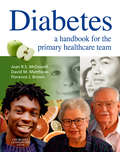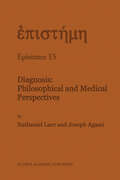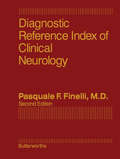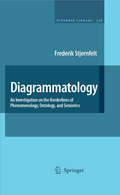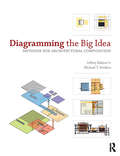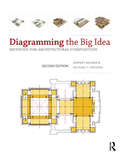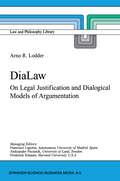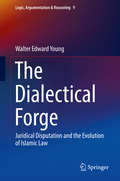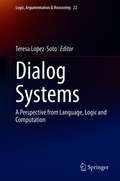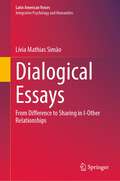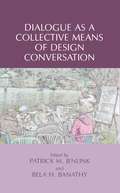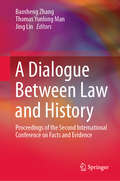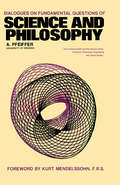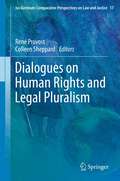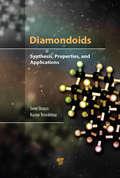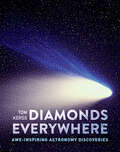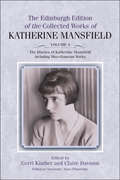- Table View
- List View
Developments in Japanese Economics
by Ryuzo Sato Takashi NegishiDevelopments in Japanese Economics provides information pertinent to the fundamental aspects of the developments in Japanese economics. This book presents the process innovative aspect of Japanese science and technology.Organized into three parts encompassing 12 chapters, this book begins with an overview of the heterogeneous capital goods model that is stable even with an infinitely short forecast. This text then emphasizes that the changes in capital accumulation are relevant for economic growth and decline. Other chapters consider the examples of how Japanese economists apply theory to empirical endeavors. This book discusses as well the durable capital stock of the Japanese manufacturing industries. The final chapter attempts to investigate the validity of the theory of self-dual demand functions, which can be integrated into consumer's utility function, by using both Japanese and U.S. data.This book is a valuable resource for economists, sociologists, political scientists, financial historians, statisticians, and research workers.
The Devil's Dictionary
by Ambrose BierceThe Devil's Dictionary is a satirical dictionary written by American journalist and author Ambrose Bierce. Originally published in 1906 as The Cynic's Word Book, it features Bierce's witty and often ironic spin on many common English words. Retitled in 1911, it has been followed by numerous "unabridged" versions compiled after Bierce's death, which include definitions absent from earlier editions.
The Devil's Dictionary (Wordsworth Reference Ser.)
by Ambrose BierceA word book, straight up, with a twist The Devil's Dictionary is an American classic. A Yankee Oscar Wilde with a wicked edge to his tongue, gained from seeing the world early and cynically as it really was, Ambrose Bierce, friend and rival of Mark Twain, was one of America's first great writers and journalists. His razor-sharp wit and underlying rage against hypocrisy is perfectly complemented by Ralph Steadman's equally incisive pen and ink illustrations. Adore, v.t. To venerate expectantly. Bride, n. A woman with a great future behind her Corporation, n. An ingenious device for securing individual profit without individual responsibility. Debauchee, n. One who has so earnestly pursued pleasure that he has had the misfortune to overtake it.
The Devil's Financial Dictionary
by Jason ZweigYour Survival Guide to the Hades of Wall StreetThe Devil's Financial Dictionary skewers the plutocrats and bureaucrats who gave us exploding mortgages, freakish risks, and banks too big to fail. And it distills the complexities, absurdities, and pomposities of Wall Street into plain truths and aphorisms anyone can understand.An indispensable survival guide to the hostile wilderness of today's financial markets, The Devil's Financial Dictionary delivers practical insights with a scorpion's sting. It cuts through the fads and fakery of Wall Street and clears a safe path for investors between euphoria and despair.Staying out of financial purgatory has never been this fun.
The Devil's Financial Dictionary
by Jason ZweigYour Survival Guide to the Hades of Wall StreetThe Devil's Financial Dictionary skewers the plutocrats and bureaucrats who gave us exploding mortgages, freakish risks, and banks too big to fail. And it distills the complexities, absurdities, and pomposities of Wall Street into plain truths and aphorisms anyone can understand. An indispensable survival guide to the hostile wilderness of today's financial markets, The Devil's Financial Dictionary delivers practical insights with a scorpion's sting. It cuts through the fads and fakery of Wall Street and clears a safe path for investors between euphoria and despair. Staying out of financial purgatory has never been this fun.
Diabetes E-Book: A Handbook for the Primary Healthcare Team
by Joan R. McDowell Florence Brown David MatthewsThis title is directed primarily towards health care professionals outside of the United States. As one of the three major diseases in the Western world, and one that is on the increase, care of people with diabetes is crucial to the entire healthcare team. This book provides a comprehensive text on the management of the person with diabetes in the community and will be invaluable to dietitians, podiatrists and GPs and especially to practice nurses, district nurses and health visitors. It has been written from a community perspective by a multiprofessional team and advocates principles of care based on the latest research. It focuses on the role of the professional in assisting in self-care of the individual with diabetes. It also includes caring for the person in long-term care settings, for example, nursing homes.The comprehensive text establishes ‘why' as well as ‘what' you need to knowThe focus on community ensures its relevanceCase study scenarios provide practical content, centred on people with diabetesIssues relating to ethnic minorities are incorporated throughoutThe evidence base ensures the latest research is incorporated and relates it to clinical practiceUseful references and websites encourage wider reading
Diagnosis: Philosophical and Medical Perspectives (Episteme #15)
by N. Laor J. Agassi1. GENERAL The term "diagnostics" refers to the general theory of diagnosis, not to the study of specific diagnoses but to their general framework. It borrows from different sciences and from different philosophies. Traditionally, the general framework of diagnostics was not distinguished from the framework of medicine. It was not taught in special courses in any systematic way; it was not accorded special attention: students absorbed it intuitively. There is almost no comprehensive study of diagnostics. The instruction in diagnosis provided in medical schools is exclusively specific. Clinical instruction includes (in addition to vital background information, such as anatomy and physiology) specific instruction in nosology, the theory and classification of diseases, and this includes information on diagnoses and prognoses of diverse diseases. What is the cause of the neglect of diagnostics, and of its integrated teaching? The main cause may be the prevalence of the view of diagnostics as part-and parcel of nosology. In this book nosology is taken as a given, autonomous field of study, which invites almost no comments; we shall freely borrow from it a few important general theses and a few examples. We attempt to integrate here three studies: ll of the way nosology is used in the diagnostic process; of the diagnostic process as a branch of applied ethics; ~ of the diagnostic process as a branch of social science and social technology.
Diagnostic Reference Index of Clinical Neurology
by Pasquale F. FinelliDiagnostic Reference Index of Clinical Neurology aims to give the busy clinician a fast, easy-to-use guide to the core neurological literature published from 1980 to 1986. This book is divided into two sections, key words and references. The keywords section consists of neuroscience terms and each main entry is followed by reference citation numbers and corresponding references. This index, unlike the usual computerized systems for literature retrieval, is structured around clinical problems and uses the approach and terminology of a practicing neurologist. The contents were sources from the full text of articles that were published in critical core of fourteen major international English-language journals in medicine and neurology. This book will be of interest to neurology students and to practicing clinical neurologists.
Diagrammatology: An Investigation on the Borderlines of Phenomenology, Ontology, and Semiotics (Synthese Library #336)
by Frederik StjernfeltDiagrammatology investigates the role of diagrams for thought and knowledge. Based on the general doctrine of diagrams in Charles Peirce's mature work, Diagrammatology claims diagrams to constitute a centerpiece of epistemology. This book reflects Peirce's work on the issue in Husserl's contemporaneous doctrine of categorical intuition and charts the many unnoticed similarities between Peircean semiotics and early Husserlian phenomenology.
Diagramming the Big Idea: Methods for Architectural Composition
by Jeffrey Balmer Michael T. SwisherAs a beginning design student, you need to learn to think like a designer, to visualize ideas and concepts, as well as objects. In Diagramming the Big Idea, Jeffrey Balmer and Michael T. Swisher illustrate how you can create and use diagrams to clarify your understanding of both particular projects and organizing principles and ideas. With accessible, step-by-step exercises that interweave diagrams, drawings and virtual models, the authors clearly show you how to compose meaningful and useful diagrams. As you follow the development of the four project groups drawn from the authors’ teaching, you will become familiar with architectural composition concepts such as proportion, site, form, hierarchy and spatial construction. In addition, description and demonstration essays extend concepts to show you more examples of the methods used in the projects. Whether preparing for a desk critique, or any time when a fundamental insight can help to resolve a design problem, this book is your essential studio resource.
Diagramming the Big Idea: Methods for Architectural Composition
by Jeffrey Balmer Michael T. SwisherAs a beginning design student, you need to learn to think like a designer, to visualize ideas and concepts, as well as objects. In Diagramming the Big Idea, Jeffrey Balmer and Michael T. Swisher illustrate how you can create and use diagrams to clarify your understanding of both particular projects and organizing principles and ideas. With accessible, step-by-step exercises that interweave diagrams, drawings and virtual models, the authors clearly show you how to compose meaningful and useful diagrams. As you follow the development of the four project groups drawn from the authors’ teaching, you will become familiar with architectural composition concepts such as proportion, site, form, hierarchy and spatial construction. In addition, description and demonstration essays extend concepts to show you more examples of the methods used in the projects. Whether preparing for a desk critique, or any time when a fundamental insight can help to resolve a design problem, this book is your essential studio resource.
Diagramming the Big Idea: Methods for Architectural Composition
by Jeffrey Balmer Michael T. SwisherBecoming an architect is a daunting task. Beyond the acquisition of new skills and procedures, beginning designers face an entirely unfamiliar mode of knowledge: design thinking. In Diagramming the Big Idea, Jeffrey Balmer and Michael T. Swisher introduce the fundamentals of design thinking by illustrating how architects make and use diagrams to clarify their understanding of both specific architectural projects and universal principles of form and order. With accessible, step-by-step procedures that interweave diagrams, drawings and virtual models, the authors demonstrate how to compose clear and revealing diagrams. Design thinking defines a method for engaging the world through observation and analysis. Beyond problem solving, design is a search for possibilities. Mastering design thinking begins with learning the fundamentals of visual composition. It embraces the ability to synthesize deductive and imaginative reasoning, combining both shrewd scrutiny and fevered speculation. Design diagrams make visible the abstractions that order the built environment. Premised upon the Beaux-Arts notion of the architectural parti, Balmer and Swisher adopt the ‘Big Idea’ as a foil and as a suitcase to organize fundamentals of architectural composition. The goal of this book is to make explicit to students what they are learning, why they are learning it and how to internalize such lessons toward their lifelong development as designers.
Diagramming the Big Idea: Methods for Architectural Composition
by Jeffrey Balmer Michael T. SwisherBecoming an architect is a daunting task. Beyond the acquisition of new skills and procedures, beginning designers face an entirely unfamiliar mode of knowledge: design thinking. In Diagramming the Big Idea, Jeffrey Balmer and Michael T. Swisher introduce the fundamentals of design thinking by illustrating how architects make and use diagrams to clarify their understanding of both specific architectural projects and universal principles of form and order. With accessible, step-by-step procedures that interweave diagrams, drawings and virtual models, the authors demonstrate how to compose clear and revealing diagrams. Design thinking defines a method for engaging the world through observation and analysis. Beyond problem solving, design is a search for possibilities. Mastering design thinking begins with learning the fundamentals of visual composition. It embraces the ability to synthesize deductive and imaginative reasoning, combining both shrewd scrutiny and fevered speculation. Design diagrams make visible the abstractions that order the built environment. Premised upon the Beaux-Arts notion of the architectural parti, Balmer and Swisher adopt the ‘Big Idea’ as a foil and as a suitcase to organize fundamentals of architectural composition. The goal of this book is to make explicit to students what they are learning, why they are learning it and how to internalize such lessons toward their lifelong development as designers.
DiaLaw: On Legal Justification and Dialogical Models of Argumentation (Law and Philosophy Library #42)
by A.R. LodderThis book is a revised version of my dissertation 'DiaLaw - on legal th justification and dialog games' that I defended on June 5 1998 at the Universiteit Maastricht. The chapters 1, 4 & 5 (now: 1, 5 & 6) of my dissertation have remained largely unaltered. In chapter 2 I added explicitly the distinction between constructing legal justification and reconstructing it, and tried to elucidate the differences (and similarities) between the product and process of justification. Chapter 3 is divided into two chapters: one on the general characteristics of DiaLaw (now: chapter 3), and the other on specific, legal characteristics of DiaLaw (now: chapter 4). In order to improve readability, all rules in these chapters have been rewritten considerably. The section on the implementation of DiaLaw is moved to the appendix. In chapter 7 (the former chapter 6), a discussion of the notions 'procedural' and 'structural' arguments is added, and different layers in argumentation models are discussed. Finally, in chapter 8 (the former chapter 7) is added a recapitulation of my view on legal justification, and a discussion on the future use in legal practice of dialog models that represent argumentation in a natural way. The main thesis has remained unaltered: legal justification should be modeled as a procedural, dialogical model in which not only products of argumentation are allowed, but, even in formal models, rhetorical, psychological aspects of argument are dealt with.
The Dialectical Forge: Juridical Disputation and the Evolution of Islamic Law (Logic, Argumentation & Reasoning #9)
by Walter Edward YoungThe Dialectical Forge identifies dialectical disputation (jadal) as a primary formative dynamic in the evolution of pre-modern Islamic legal systems, promoting dialectic from relative obscurity to a more appropriate position at the forefront of Islamic legal studies. The author introduces and develops a dialectics-based analytical method for the study of pre-modern Islamic legal argumentation, examines parallels and divergences between Aristotelian dialectic and early juridical jadal-theory, and proposes a multi-component paradigm—the Dialectical Forge Model—to account for the power of jadal in shaping Islamic law and legal theory.In addition to overviews of current evolutionary narratives for Islamic legal theory and dialectic, and expositions on key texts, this work shines an analytical light upon the considerably sophisticated “proto-system” of juridical dialectical teaching and practice evident in Islam’s second century, several generations before the first “full-system” treatises of legal and dialectical theory were composed. This proto-system is revealed from analyses of dialectical sequences in the 2nd/8th century Kitāb Ikhtilāf al-ʿIrāqiyyīn / ʿIrāqiyyayn (the “subject-text”) through a lens molded from 5th/11th century jadal-theory treatises (the “lens-texts”). Specific features thus uncovered inform the elaboration of a Dialectical Forge Model, whose more general components and functions are explored in closing chapters.
Dialog Systems: A Perspective from Language, Logic and Computation (Logic, Argumentation & Reasoning #22)
by Teresa Lopez-SotoThis book focuses on dialog from a varied combination of fields: Linguistics, Philosophy of Language and Computation. It builds on the hypothesis that meaning in human communication arises at the discourse level rather than at the word level. The book offers a complex analytical framework and integration of the central areas of research around human communication. The content revolves around meaning but it also gives evidence of the connection among different points of view. Besides discussing issues of general interest to the field, the book triggers theoretical argumentation that is currently under scientific discussion. It examines such topics as immanent reasoning joined with Recanati's lekta and free enrichment, challenges of internet conversation, inner dialogs, cognition and language, and the relation between assertion and denial. It proposes a dialogical framework for intra-negotiation and gives a geolinguistic perspective on spoken discourse. Finally, it examines dialog and abduction and sheds light on a generation of dialog contexts by means of multimodal logic applied to speech acts.
Dialogical Essays: From Difference to Sharing in I-Other Relationships (Latin American Voices)
by Lívia Mathias SimãoThis book presents a collection of interrelated essays that analyze the theoretical foundations of semiotic-cultural constructivism in psychology written by one of the pioneers in this field of research: Dr. Lívia Mathias Simão, senior professor at the Institute of Psychology of the University of São Paulo, Brazil. In each of the five essays included in this book, the author establishes a dialogue with key thinkers and intellectual traditions of dialogical approaches arriving at core points of I-other relationships according to the perspective of semiotic-cultural constructivism in psychology.The first essay establishes a dialogue with Greek philosophers such as Parmenides and Aristotle. In the second essay this dialogue is established with semiotic-constructivist psychologists such as Jaan Valsiner, Ragnar Rommetveit and Ivana Marková. The third essay is a dialogue with the contributions of Ernst Boesch’s symbolic action theory. The fourth essay proposes a dialogue between semiotic-cultural constructivists and Hans-Georg Gadamer’s hermeneutics. Finally, the fifth essay proposes how the philosophy of Emmanuel Levinas contributes to dialogical studies of I-other in the context of semiotic-cultural constructivism.Originally published in Portuguese for the Brazilian market, Dialogical Essays: From Difference to Sharing in I-Other Relationships is now published in English in an international edition that will be of interest to psychologists, philosophers, historians and other human and social scientists interested in epistemological, ontological and ethical aspects of I-other relationships from the perspective of semiotic-cultural constructivism and cultural psychology.
Dialogue as a Collective Means of Design Conversation
by Patrick M. Jenlink Bela H. BanathyThis is the second volume to offer a cross-disciplinary approach to examining dialogue as a communicative medium. It explores different modes of conversation and the application of design conversation within and across various types of human experiences. Coverage examines design conversation from philosophical, cultural, spiritual, and historical perspectives. It also explores philosophical and theoretical perspectives as well as methodological ideas related to conversation.
A Dialogue Between Law and History: Proceedings of the Second International Conference on Facts and Evidence
by Baosheng Zhang Thomas Yunlong Man Jing LinThis book builds on the success of the First International Conference on Facts and Evidence: A Dialogue between Law and Philosophy (Shanghai, China, May 2016), which was co-hosted by the Collaborative Innovation Center of Judicial Civilization (CICJC) and East China Normal University. The Second International Conference on Facts and Evidence: A Dialogue between Law and History was jointly organized by the CICJC, the Institute of Evidence Law and Forensic Science (ELFS) at China University of Political Science and Law (CUPL), and Peking University School of Transnational Law (STL) in Shenzhen, China, on November 16–17, 2019. Historians, legal scholars and legal practitioners share the same interest in ascertaining the “truth” in their respective professional endeavors. It is generally recognized that any historical study without truthful narration of historical events is fiction and that any judicial trial without accurate fact-finding is a miscarriage of justice. In both historical research and the judicial process, practitioners are invariably called upon, before making any arguments, to prove the underlying facts using evidence, regardless of how the concept is defined or employed in different academic or practical contexts. Thus, historians and legal professionals have respectively developed theories and methodological tools to inform and explain the process of gathering evidentiary proof. When lawyers and judges reconsider the facts of cases, “questions of law” are actually a subset of “questions of fact,” and thus, the legal interpretation process also involves questions of “historical fact.” The book brings together more than twenty leading history and legal scholars from around the world to explore a range of issues concerning the role of facts as evidence in both disciplines. As such, the book is of enduring value to historians, legal scholars and everyone interested in truth-seeking.
Dialogues on Fundamental Questions of Science and Philosophy: The Commonwealth and International Library: Dialogues on Fundamental Questions of Science and Philosophy
by A. PfeifferDialogues on Fundamental Questions of Science and Philosophy presents a compilation of dialogues concerning the basic questions of science and philosophy. This book discusses the relationship between philosophy and science.Organized into two parts encompassing 10 chapters, this book begins with an argument that reality can be recognized objectively, but not that there is a conflict between science and faith. This text then examines the invalidity of the causality principle in the microworld of the elementary particle and by the lack of individual identity of the particles. Other chapters consider the argument that philosophy should also make use of scientific methods. This book discusses as well the extended version of the biogenetical law of Haeckel, which is also valid for the progress of the human perceptive faculty. The final chapter deals with the argument that the idea of good as a tenet for practical actions is religious in character.This book is a valuable resource for readers who are interested in the fields of science and philosophy.
Dialogues on Human Rights and Legal Pluralism (Ius Gentium: Comparative Perspectives on Law and Justice #17)
by René Provost and Colleen SheppardHuman rights have transformed the way in which we conceive the place of the individual within the community and in relation to the state in a vast array of disciplines, including law, philosophy, politics, sociology, geography. The published output on human rights over the last five decades has been enormous, but has remained tightly bound to a notion of human rights as dialectically linking the individual and the state. Because of human rights’ dogged focus on the state and its actions, they have very seldom attracted the attention of legal pluralists. Indeed, some may have viewed the two as simply incompatible or relating to wholly distinct phenomena. This collection of essays is the first to bring together authors with established track records in the fields of legal pluralism and human rights, to explore the ways in which these concepts can be mutually reinforcing, delegitimizing, or competing. The essays reveal that there is no facile conclusion to reach but that the question opens avenues which are likely to be mined for years to come by those interested in how human rights can affect the behaviour of individuals and institutions.
Diamondoids: Synthesis, Properties, and Applications
by Sven Stauss Kazuo TerashimaOver the past few decades, carbon nanomaterials, most commonly fullerenes, carbon nanotubes, and graphene, have gained increasing interest in both science and industry, due to their advantageous properties that make them attractive for many applications in nanotechnology. Another class of the carbon nanomaterials family that has slowly been gaining (re)newed interest is diamond molecules, also called diamondoids, which consist of polycyclic carbon cages that can be superimposed on a cubic diamond lattice. Derivatives of diamondoids are used in pharmaceutics, but due to their promising properties—well-defined structures, high thermal and chemical stability, negative electron affinity, and the possibility to tune their bandgap—diamondoids could also serve as molecular building blocks in future nanodevices. This book is the first of its kind to give an exhaustive overview of the structures, properties, and current and possible future applications of diamondoids. It contains a brief historical account of diamondoids, from the discovery of the first diamondoid member, adamantane, to the isolation of higher diamondoids about a decade ago. It summarizes the different approaches to synthesizing diamondoids. In particular, current research on the conventional organic synthesis and new approaches based on microplasmas generated in high-pressure and supercritical fluids are reviewed and the advantages and disadvantages of the different methods discussed. The book will serve as a reference for advanced undergraduate- and graduate-level students in chemistry, physics, materials science, and nanotechnology and researchers in macromolecular science, nanotechnology, chemistry, biology, and medicine, especially those with an interest in nanoparticles.
Diamondoids: Synthesis, Properties, and Applications
by Sven Stauss Kazuo TerashimaOver the past few decades, carbon nanomaterials, most commonly fullerenes, carbon nanotubes, and graphene, have gained increasing interest in both science and industry, due to their advantageous properties that make them attractive for many applications in nanotechnology. Another class of the carbon nanomaterials family that has slowly been gaining (re)newed interest is diamond molecules, also called diamondoids, which consist of polycyclic carbon cages that can be superimposed on a cubic diamond lattice. Derivatives of diamondoids are used in pharmaceutics, but due to their promising properties—well-defined structures, high thermal and chemical stability, negative electron affinity, and the possibility to tune their bandgap—diamondoids could also serve as molecular building blocks in future nanodevices. This book is the first of its kind to give an exhaustive overview of the structures, properties, and current and possible future applications of diamondoids. It contains a brief historical account of diamondoids, from the discovery of the first diamondoid member, adamantane, to the isolation of higher diamondoids about a decade ago. It summarizes the different approaches to synthesizing diamondoids. In particular, current research on the conventional organic synthesis and new approaches based on microplasmas generated in high-pressure and supercritical fluids are reviewed and the advantages and disadvantages of the different methods discussed. The book will serve as a reference for advanced undergraduate- and graduate-level students in chemistry, physics, materials science, and nanotechnology and researchers in macromolecular science, nanotechnology, chemistry, biology, and medicine, especially those with an interest in nanoparticles.
Diamonds Everywhere: Awe-inspiring Astronomy Discoveries
by Tom Kerss Royal Observatory Greenwich Collins AstronomyAnswers to the mysteries of the cosmos for inquiring minds. Explore the entire cosmos in 101 fascinating topics – from mind-blowing numbers, astonishing sights, to strange-but-true discoveries and everything in between.
The Diaries of Katherine Mansfield: Including Miscellaneous Works (The Collected Works of Katherine Mansfield)
by Gerri Kimber Claire DavisonPreviously only available as edited excerpts or as largely unedited transcriptions, Katherine Mansfield’s diaries and notebooks have been re-transcribed and minutely edited for the first time, and are presented in this volume with precise historical, cultural and biographical contextual information. The entries show Mansfield’s evolution as a writer as well as the impact of her era on early drafts of her mature writings. This volume also contains fascinating new material never previously published – poem-cycles, letters, Mansfield’s own illustrations, and the last materials she was working on in the final weeks of her life. A detailed index facilitates cross-reading and referencing for scholars and general readers alike.
